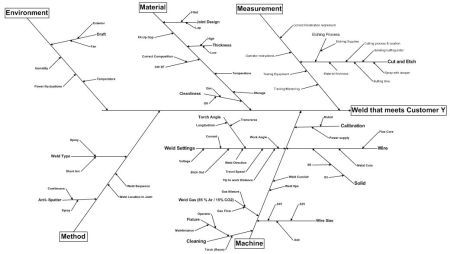“What is expected of a welding inverter” in order to be able to interact with a robot? Common, logical questions for a welding equipment marketing guy, right? In a recent robotic welding group forum, Mr. Chinoy, the marketing manager of a welding equipment company, also asked “what parameters are required to integrate GMAW (MIG) equipment to the robot control panel”, besides wire feed speed and voltage? I answered those. And yet, hidden under the tip of that question like the 90% of an underwater iceberg, is the real question of ship-sinking power: what welding system interfacing and content will really earn the respect and repeat business of an end-user customer? Let’s do something stunning, and talk about that far bigger question too!
The answers depend on both your target business segment, and your company’s long-term goals as a welding equipment manufacturer. Many welding equipment companies design and launch a new machine every 3 years. They just answer the obvious visible/functional questions. One company chose to put out a pulse-MIG inverter that has been in continuous production for over 20 yrs, and has been the “king” not only of Electric Boat but the Korean shipyards for over a decade. In fact, older system versions can typically be upgraded to latest performance or customized waveform combinations with a simple plug-in EPROM chip swapout.
Why such content & success with the Digipulse (Automatic) system? Simple – they answered the big hidden questions, and applied the hard yet hidden expertise required in order to faithfully serve the arc physics as well as the customer’s real needs and desires. How could they design that content back when welding robots were nearly non-existent? Because “hard-tooled” PLC-interfaced welding automation has essentially the same basic performance and interfacing needs as a robot. That can be shown by taking the unusual step of putting a robotic MIG process “fishbone” diagram together.
I’ve put a GMAW fishbone below (a W.E./SSBB project collaboration). It’s still hard to read when you click on it, and it doesn’t touch on the welding system design or integration content. But, it does show the overall process complexity and provides a starting point to consider welding system design and integration needs in order to consistently deliver perfect weld quality.
Take arc-starting and arc-established signals, for example. A manual welder is going to automatically compensate for an occasional poor arc-start. It doesn’t matter. But consider the dramatic difference in welding automation: when the torch travel in automation must rely on a signal to begin, aren’t the quality and cost implications much more dramatic and far-reaching than what most welding equipment manufacturers have been prepared to admit? This is only one piece of the automation puzzle, but it’s both critical and badly neglected.
The common minimalist approach is to provide a feedback signal during active welding, a “system ready” signal, an error output signal to indicate the system is in a fault state and unable to weld, and maybe a system-reset input. Many welding systems just provide those minimums, as “add-on” content to enable manual welding systems to go on a robot.
The problem from there is that many end users expect (at least eventually) to get high-performance welding automation results. Of course that doesn’t happen, then everyone points a finger of blame at someone else, and if the customer succeeds in identifying the true welding-system design and/or integration weakness using many examples and actual real-time recorded data, the company responsible (such as Panasonic did, twice) might simply shrug and say “it welds good most of the time”. Of course it does. But it’s also incapable of delivering world-class performance, simply because it’s not designed to. Read the rest of this entry »




 Posted by Brian Dobben
Posted by Brian Dobben 
